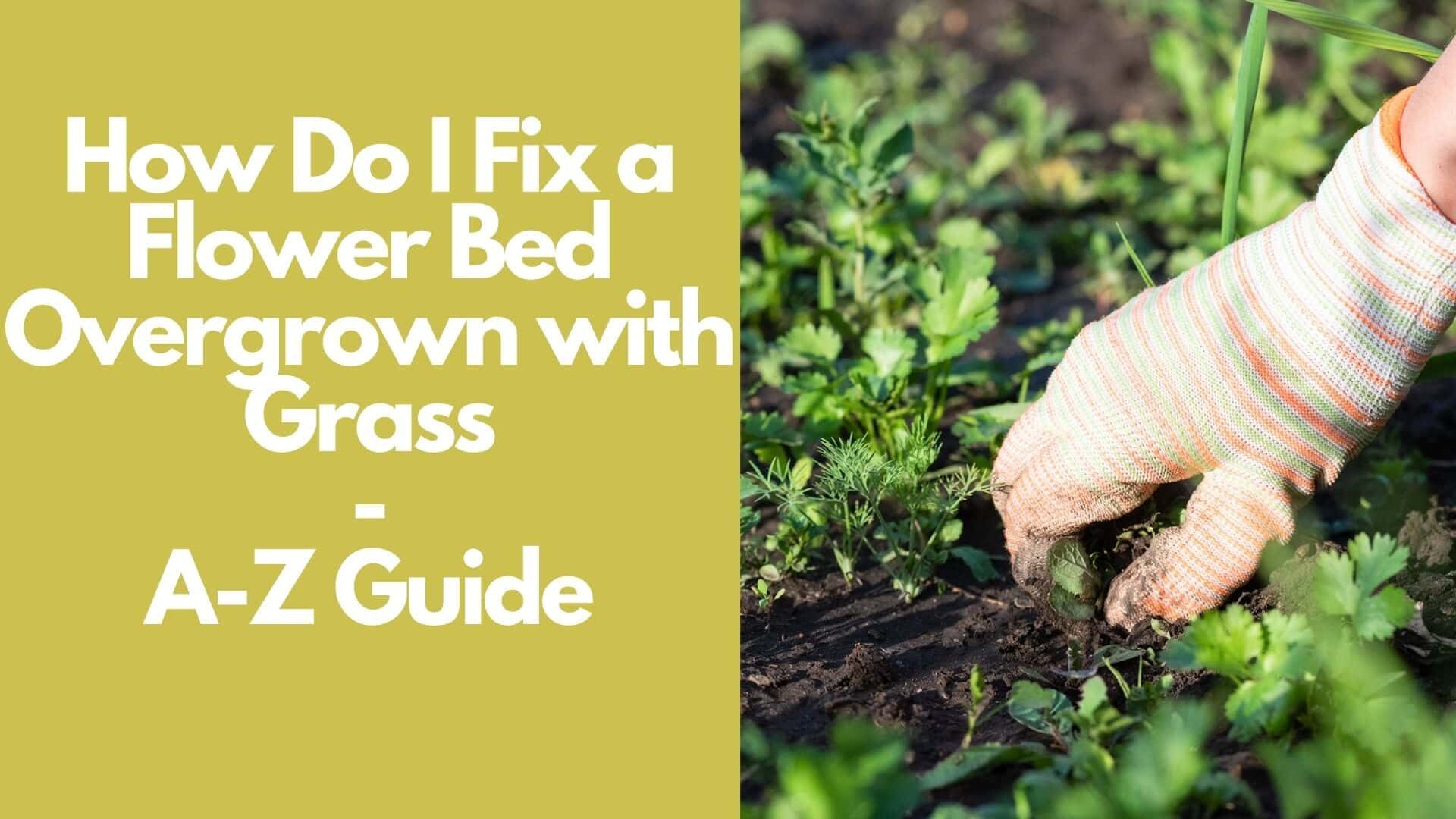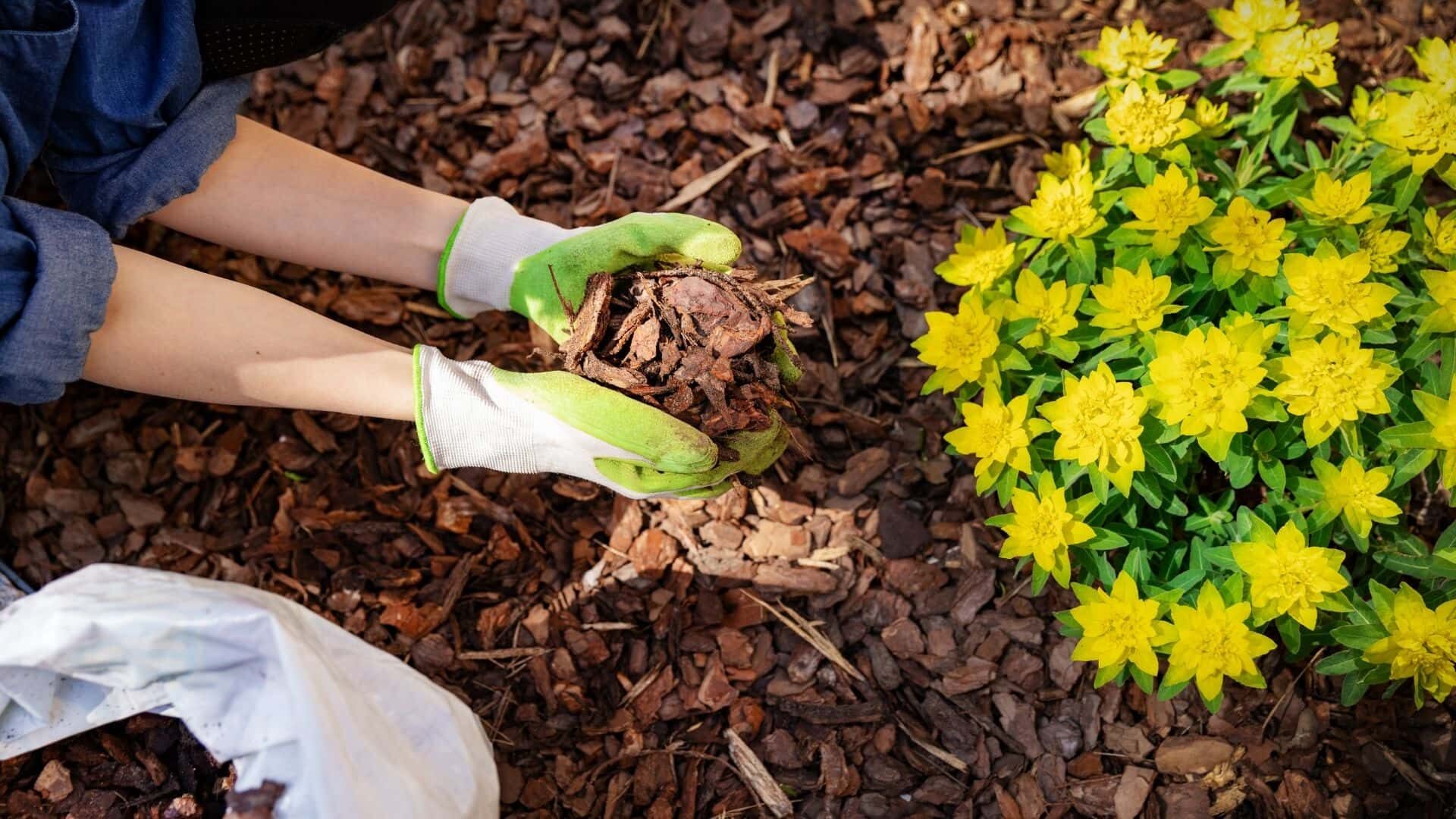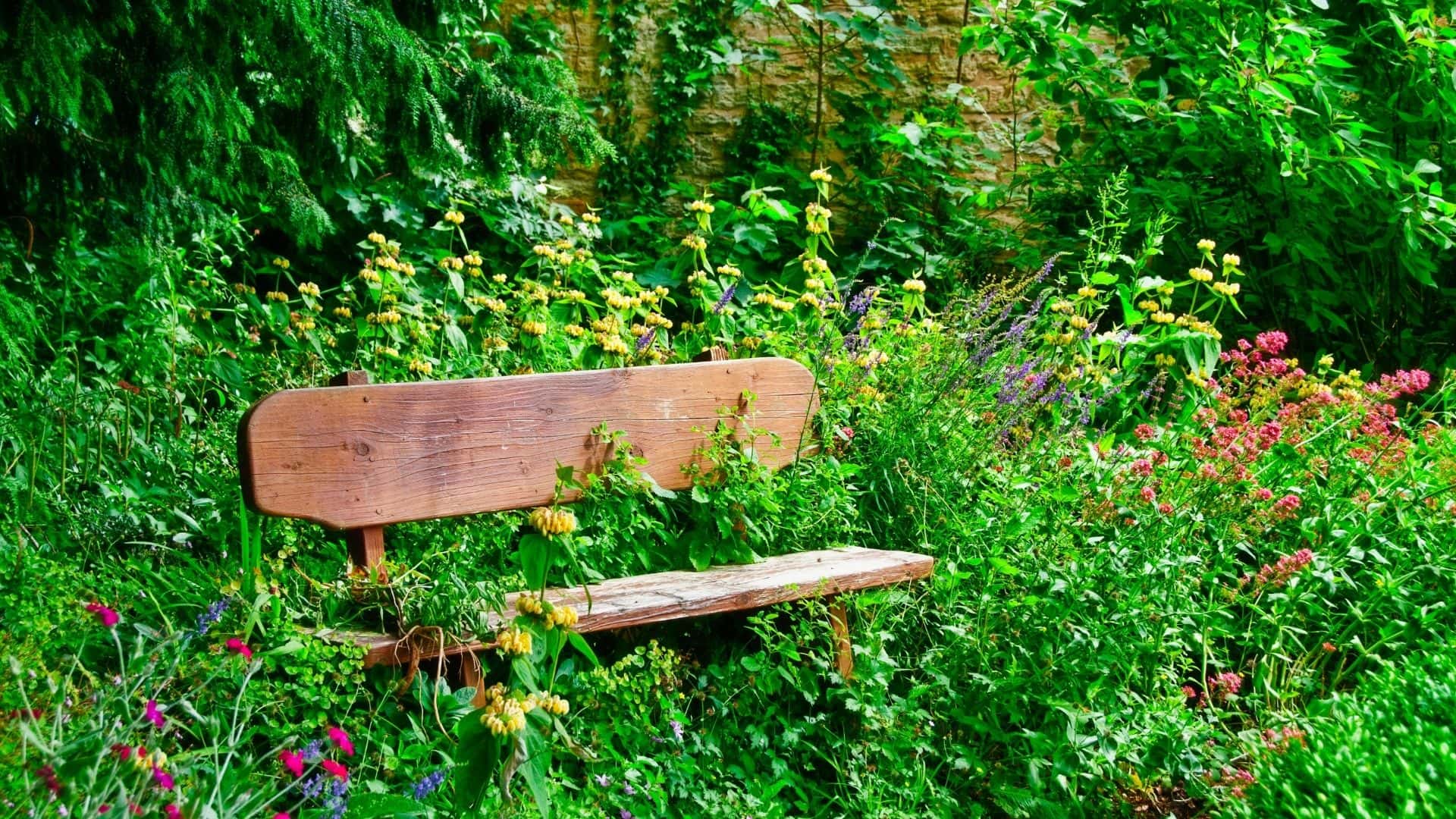Flower gardening in your backyard can improve the look of your home and help you feel more calm and relaxed. A flower bed overgrown with grass might ruin the tranquility of an otherwise beautiful landscape. Lawn grass is also gorgeous, but it can be difficult to eradicate once it has invaded your flower beds.
Some people replace their existing flower beds periodically, and some people don’t bother to do that at all. And herein lies the complication. It’s a lot of labor when they eventually recognize they need to work on their flower garden.
If you enjoy gardening, clearing the ground and constructing a new flower bed might be something you’d appreciate. You must begin with a clean slate and plan for a fresh design before developing a new flower bed. If you want to remove weed grasses from your garden, you’ll need to take extra care to avoid damaging neighboring plants. By reading this guide, you will be able to know, How Do I Fix a Flower Bed Overgrown with Grass.

Let’s Start,
When cleaning a flower bed overgrown with grass, it is better to think about enhancing soil fertility and allowing water to drain through it. To lightly prepare a flower bed, you will need to remove any weeds and incorporate organic matter into the soil. Compost, grass clippings, straw, or animal manure are examples of organic waste and, they are actively decomposing and contribute to improving your soil’s quality and fertility. So, don’t waste grass clippings in the overgrown garden.
How to clean an overgrown flower bed?
Overgrown flower beds provide a problem for everyone. It’s a simple six-step process. Follow these steps and make your flower garden beautiful.
1. Examine your overgrown flower bed.
The condition of the garden dictates what kind of treatment is required. The removal of small plants is much easier than that of large ones.
As a result, the first step in clearing an overgrown flowerbed is to determine the sorts of plants that are superfluous. Small perennials and weeds can remove by homeowners. However, professional arborist’s services require large trees.
2. Gather the essential tools.
Depending on how you intend to handle the problem, you may require different tools for the job. Gloves, masks, shovels, hoes, spades, rototillers, herbicides, plastic covers, and other tools are some necessary equipment.
3. Use appropriate ways to remove overgrown grass.
You must eliminate all weeds, grass, and undesired plants from the garden to clear an overgrown flower bed or change an old one into a new one.
Using this method helps to give the bed a fresh new look. Overgrown flower beds can be dealt with in a variety of ways, depending on the situation. Treatments for eradicating overgrown grass include using Herbicides, removing grass by hand, and Digging. There are a plethora of other non-chemical methods available for eliminating them.
4. Create a new design for plants.
Think about your current plants once the weeds and grass have cleared. Overgrown sections of the plants can trim off if they’re in poor condition.
Save any additional blooms you find. Funerals and other charitable events might also benefit from floral donations. After that, you’ll need to rake the dirt to remove any large rocks or pebbles to make it smooth.
5. Prepare fertile soil.
To provide the plants with a solid base, you can also add fertile soil if necessary. Plants obtain the nutrients and vitamins they need from the soil.
Lay a 2- to 3-inch layer of compost on the flower bed and work it into the soil with a shovel for healthy plant growth. Soil that is rich in organic matter is better able to supply your plants with the nutrients they need. Work with damp soil and flip it over from about a foot deep when you’re about to sow.
6. Remove yard waste.
Once you’re removing the weeds and plants from your overgrown flower bed, you’ll likely have a lot of yard garbage to dispose of. A wheelbarrow should use to remove all of your landscape debris from the newly cleared space.
What are the best ways to remove or kill overgrown grass?
To clear up your flower bed of unwanted grass and weeds, try one of the methods listed below.
1. Removing Grass by Hands
Use your hands instead of chemicals to get rid of small weeds. People frequently use this traditional way to avoid accidentally killing desirable plants. Wearing gloves is a good idea before you start working with your hands.
Pull the grasses and plants out of the dirt one by one. To avoid leaving any roots behind when picking weeds, use caution. If it persists for a few days, you may have to perform the same thing again.
2. Solarization Method
Use a clear or black plastic tarp to cover the area. Leave the covering on for several weeks during hot weather. Grass, weeds, seeds, and germs in the soil will kill by the high temperature of the earth beneath the plastic.
Your grass should be dead and decomposing in four weeks or less. It’s also possible to add compost or other soil amendments if you want to plant your garden bed after you’ve buried the dead grass.
3. Applying Vinegar
The grass will die if it douses with a diluted vinegar solution. The desiccant properties of acetic acid in 5% vinegar kill plant life. Vinegar kills weeds slowly and increases the acidity of the soil. But, it might require additional applications.
Before spraying, make sure to protect whatever you want to keep because vinegar is a universally lethal substance.
3. Digging and Losing the Ground
Uprooting the dead or dying plants with a shovel or spade is one option for getting rid of them.
You should check the dirt before you start digging. Digging will be a breeze if the soil is damp from water. Hence, if it’s too dry, add some water.
After that, grip the plant firmly and remove it from the ground. All of the roots must remove from the soil. Dig out any remaining roots with a shovel if you find any. Then you can decompose them and use the resulting compost as fertilizer.
You might use this procedure to get rid of a few unwanted plants. Otherwise, it’s a hassle to work with them.
Another strategy can use for a wide region or several undesired plants. To loosen and rake the dirt, you can use an auger-type rototiller. It’s possible to bring all the roots up to the surface by excavating the ground.
To get rid of the grass, you’ll need to remove the seeds from the soil. Plastic should use to cover the area to get rid of it. Then, check to see that the plastic cover’s edge is secure. It should leave for around 50-60 days. Seeds and weeds can’t get enough sunlight these days. As a result, the weeds doom to die.
The clear plastic cover can utilize in the fall and winter. If this is the case, the temperature beneath the plastic will soar to deadly levels that the weeds will perish.
4. Mulching
For the health of your plants, mulch can assist regulate soil temperature and keeping soil moisture. Your flower beds will look better, and fewer weeds will develop if you mulch them. Organic mulches are also a source of nutrients for your plants because they decompose.
After eradicating a grass infestation, use a 3-inch layer of mulch to prevent fresh grass seeds from growing in the flower bed.

What kinds of organic materials are best for mulching?
A wide variety of organic mulches are available, including grain straw, hay, fresh-cut fodder crops, chipped brush, wood shavings, and tree leaves. Organic mulches such as hay and straw are commonly used.
5. Smothering the Grass
The organic gardener’s favorite method for preparing flowerbeds is this one. To plant flowers, you must first suffocate the grass. Another good thing about this is that it’s very cheap and safe to use. You can use it to recycle all the old newspapers.
6. Spraying Boiling water
Boiling water can damage grass down to the roots. As a result, all the beneficial microorganisms can destroy.
7. Soap Application
Weeds with waxy or hairy surfaces can make more sense to desiccants by the oil in soap. Keep vinegar or vodka sprays on leaves with a few drops of liquid dish detergent. Keep note of what you spray by shining the leaves with soap.
8. Herbicides
You can apply herbicides if you wish to get rid of the weeds. A popular herbicide is Glyphosate.
It’s a tool for regulating plant development. Broadleaf plants and grasses kill by spraying it on their leaves. But you have to be very careful when using these herbicides because they can hurt you. It might kill some essential plants.
It’s also possible to arise negative effects on our health. It might irritate the skin and eyes if they expose to it.
What kinds of herbicides can use for removing grass?
Herbicides can use in various ways to get rid of the grass.
1. Broad-spectrum herbicide
When it comes to getting rid of grass in flower beds, nothing beats the power of a broad-spectrum herbicide. But keep in mind that a broad-spectrum herbicide will also destroy any ornamental plant it comes into touch with them.
Both premixed spray bottles and liquid concentrates for use with a garden sprayer are common forms of chemical herbicides.
2. Selective Herbicide
There are grass-specific herbicides on the market that destroy only grasses without damaging your garden’s other plants.
It will kill most annual grasses like crabgrass and foxtails, but it will kill long-lived annual grasses like nimblewill and quackgrass. Apply selective herbicides in the same manner as broad-spectrum herbicides.
3. Pre-Emergent Weed Killer
A pre-emergent herbicide stops new seeds from growing when they fall on the ground. These chemicals can’t damage the roots of perennial weeds or prevent the germination of already existing weed seeds in the soil. As a result, they have only a limited impact on the growth of perennial grasses in your garden.
Pre-emergents can use in conjunction with other methods to keep grasses and weeds under control, but they will also impede the germination of desirable seeds.
Avoid using this herbicide if your garden contains decorative plants that you want to self-seed. In most cases, pre-emergent weed killers apply to the soil in a granular form.
How to redesign a flower bed?
Now that your overgrown, unkempt landscape is under control, congratulations! After all that, it’s time to clean up the garden and create or rebuild a new flowerbed. Make sure you do this.
1. Fill the ground with fertile soil.
First, you should lay fertile soil in your DIY flower bed so flowers can grow well. A landscaper at your local garden supply store may be able to provide you with advice on the best type of soil to use in your garden.
To improve the soil’s nutrition and quality, add a layer of garden-specific soil about 6 inches deep and distribute it out across the bed. Before planting, allow your new garden bed to dry out for 30 to 60 days.
How to check the soil quality at home?
There are a few easy tests you may perform to get an idea of the general health of your soil. Dig a hole a few inches broad and a few feet deep to see if your yard’s soil drains well. Wait for the hole to fill up with water. You’ll need a lot of organic matter and amendments in your soil if it takes longer than three or four hours for the water to drain.
A simple hand test can use to determine the general quality of the soil. Compress the soil with your hands. The soil is loamy if it holds together yet crumbles when poked.
2. Plant close together.
As you plan your flower arrangements, think about how they’ll look from every angle in your home. For example, they could group by color or arrange from the smallest to the largest.
Weeds will not have a place to grow if you plant your flowers closer together. In a botanical garden, you’ll often notice blankets of flowers or plants. It looks nice and requires less maintenance.
You may use this strategy in your garden to add interest and prevent a lot of weeding during the season.
3. Mulch the flowerbeds.
Keep an eye out for little puddles around the base of your plants once you’ve put them in the ground. Adding mulch to your flowerbed will help keep the soil moist and prevent weeds from sprouting. The stems of plants can kill if mulch comes into contact with them.
4. Build new pathways.
An easy-to-build garden path can use to offset fast-growing grass in the flower garden arrangement. A quick and easy way to build one is to just lay natural stone slabs on the ground or lawn. A garden walk will entice everyone to take a brief stroll, all the more so if it leads to a lovely tree or a charming bench.
5. Take care of your flowerbed.
Determine how much yard waste you’ll be disposing of when you finish up your flower garden. It all depends on the size of the project, whether you’re rearranging a flowerbed and removing dirt or clearing out a wide yard of trees and bushes.
You may be able to use your city’s curbside service for a little seasonal clean-up and weed removal. To get rid of your yard waste, you may want to rent a dumpster. People can clean up at their own pace with this. When doing this, they can get rid of all the yard waste at once.
How to make effective DIY homemade grass and weed killer
White vinegar, salt, and liquid dish soap are the best ingredients to use in a DIY solution. Weeds kill by combining the unique qualities of each of these components.
They both have acetic acid, which makes the plants dry out and die. As a result, dish soap acts as an emulsifier, allowing the liquid to penetrate the leaves rather than sit on the surface.
Mix a gallon of white vinegar with a cup of salt and a tablespoon of dish soap to make a plentiful supply of this man-made mixture. Make sure it mixes well, then put it in a spray bottle for easy use. To keep the bottle handy, you can keep it in your house.
When should apply weed killer?
Weed killers should apply during the hottest part of the day so that the weeds can dry out and die. Wait for a sunny and clear day before mixing this. As soon as the sun is out, you’ll notice the weed killer’s effects. Weeds’ leaves are likely to turn brown by now. As the season progresses, the leaves should darken and eventually fall off the tree.
Weeds need to spray from a distance, so make sure they are completely submerged. Spray only what you want to destroy because the solution doesn’t distinguish between unwanted plants and weeds.
Watch Overgrown Small Flower Garden Makeover – Before and After | Video
Top 5 FAQs & answers related to How do I fix a flower bed overgrown with grass
Is weeding by hand a waste of time?
If you remove weeds as soon as they appear, they’re much easier to eradicate and don’t have time to mature and go to seed, which greatly increases the number of unwanted plants in your yard. Also, weeding early helps to avoid using toxic chemicals that harm the environment, which saves money and time in the long run.
What should I do before mulching?
Remove weeds from the area before applying mulch. It is possible to remove them by hand or by using a garden hoe or hand weeder. Control There are numerous methods for weeding your lawn and garden without using chemicals, and there are also many methods for safely using herbicides.
How do you keep perennials weed-free?
Organic mulch is almost always the best technique to suppress weeds in a perennial garden or shrub border. Some people only have to change the mulch every two years. Shredded wood mulch is good at keeping weeds at bay, looks good, and breaks down slowly over time.
May I use weed sprays in winter?
During the winter, weeds can spray if the grass is dormant and the temperature is high enough. In your brown, inactive grass, areas of green indicative of weed growth should be easy to spot. Winter weeds can spray by simply applying weedkiller to the desired locations.
When may you use weed killer after rain?
A good rule of thumb is to spray 30 minutes to an hour before the rain, if not sooner, depending on the brand you’re using to kill weeds. Wait for the leaves to dry up before applying herbicide after a rainstorm since it could wash away the herbicide.
Conclusion
By reading this guide, I hope you got the full idea of How Do I Fix a Flower Bed Overgrown with Grass.
Please share this How Do I Fix a Flower Bed Overgrown with Grass: A-Z Guide with your friends and do a comment below about your feedback.
We will meet you on next article. Until you can read, Why Are My Tomato Leaves Turning Purple: Guide with Reasons
